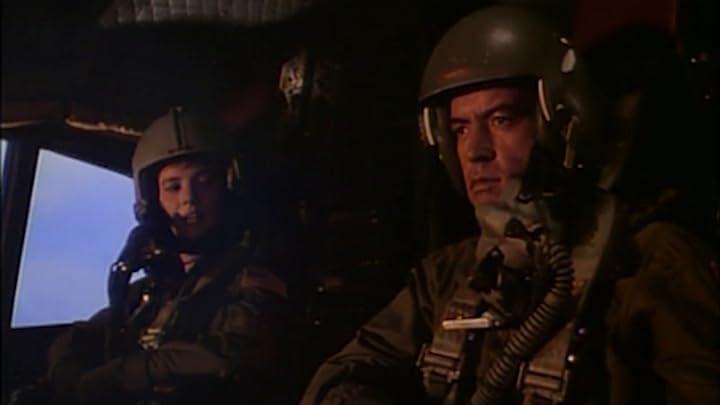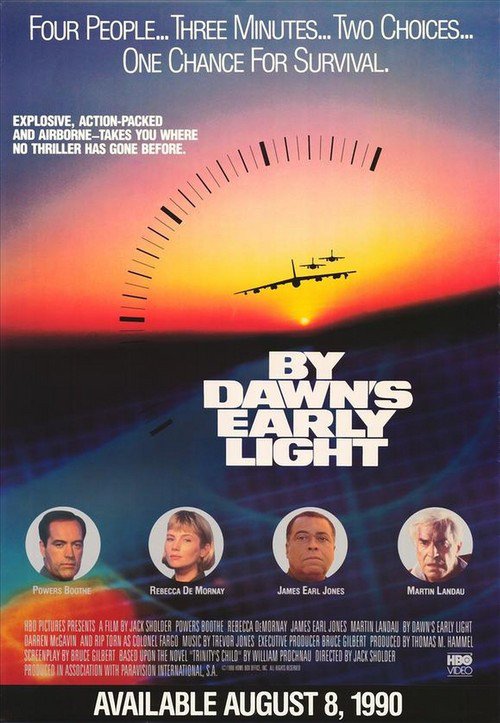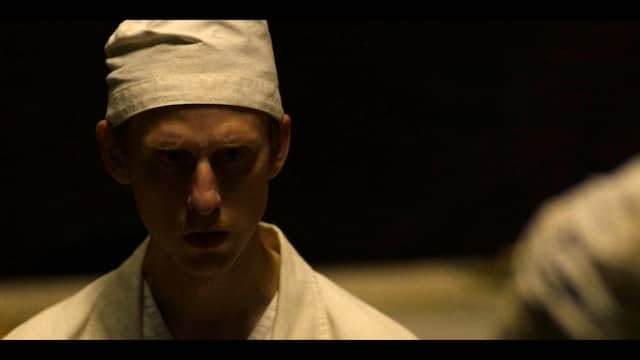
“By Dawn’s Early Light” (1990): The Cold War Winding Down – Film Review

“By Dawn’s Early Light” emerges from the twilight of the Cold War era, presenting a chilling scenario that treads the line between an unnerving glimpse into nuclear annihilation and a cautionary tale draped in the camouflage netting of the late ’80s geopolitical anxieties. Directed by Jack Sholder, this HBO feature takes its audience on a harrowing ride aboard the Doomsday train, flirting with the very real fear of global destruction that was etched into the psyche of anyone who grew up during the shadow of the arms race.
Plot and Performances
At the heart of this speculative drama lies a somewhat conventional narrative: the United States finds itself on the brink of nuclear war following a strategic misstep, and it’s up to a few good men—and women—to pull us back from the brink. Powers Boothe plays Major Cassidy, a bomber pilot who embodies the American ideal of a soldier, draped in the patriotism required for such a role. Rebecca De Mornay as Captain Moreau, the President’s girlfriend and eventual bomber co-pilot, provides a performance that exudes both strength and the obligatory love interest warmth. Meanwhile, James Earl Jones as the level-headed submarine commander offers gravitas to the submarine sequences that, frankly, outclasses the script he’s given.
The Ensemble and Direction
Sholder directs with a steady hand, knowing when to ratchet up tension and when to allow quiet moments of humanity amidst the chaos. The film deftly jumps between the President (Martin Landau), grappling with an impossible decision, the war room generals, and the airborne and submarine crews. There’s a sense that Sholder is trying to weave a tapestry of viewpoints, capturing the various facets of a society on the precipice of doomsday. It’s an ambitious undertaking that, while sometimes lacking in depth, never skimps on the urgency of its subject matter.
Cinematography and Score The cinematography by Alexander Gruszynski is utilitarian in nature, capturing the claustrophobic confines of a B-52 bomber or the austere corridors of power with a raw, almost documentary-style approach. The film’s score, composed by Gary Chang, underpins the narrative with a thrumming intensity that underscores the ever-present ticking clock of the film’s central crisis.
Behind the Scenes
“By Dawn’s Early Light” was crafted during the waning days of the Soviet Union, and its production was imbued with the anxiety of the era. The film was shot on a relatively modest budget, which both limited and inspired the production design. The use of stock footage for certain military sequences was a practical choice that lends a certain authenticity, even as it clashes with the film’s own footage in terms of grain and quality.
Controversy and Legacy
Upon its release, the film garnered critical attention for its stark portrayal of nuclear warfare. However, it also faced scrutiny for its melodramatic tendencies and what some considered fearmongering during a time of thawing Cold War tensions. In hindsight, the movie can be seen as one of the last gasps of a genre that was losing relevance as its central conflict faded from the world stage.
Critical Assessment
“By Dawn’s Early Light” sits comfortably within the pantheon of Cold War cinema, though it doesn’t quite reach the heights of classics like “Dr. Strangelove” or “Fail-Safe.” There’s a sense that the film is caught between wanting to be a serious examination of nuclear war and a more mainstream thriller. This dichotomy is the source of both its tension and its shortcomings. The character arcs are a bit too tidy, the narrative resolutions a touch too convenient, which undermines the chaos and uncertainty that a real nuclear crisis would entail.
The film’s value lies in its ability to provoke thought and discussion, serving as a time capsule of a bygone era’s anxieties and as a stark reminder of the razor-thin line between peace and annihilation. “By Dawn’s Early Light” may not leave viewers with the catharsis of a story neatly wrapped up, but it does achieve a haunting resonance, echoing in the collective consciousness long after the credits roll. Its slightly cynical approach to the near-miss apocalypse narrative challenges the audience to consider the true cost of war, especially one fought with the press of a button.
“By Dawn’s Early Light” remains a pertinent—if somewhat melodramatic—artifact of its time, a film that’s as much about the era of its creation as it is about the terrifying scenario it depicts. It doesn’t quite escape the gravitational pull of its genre’s tropes, but it manages to navigate its storytelling mission with enough competence to leave its mark on the landscape of Cold War cinema.




